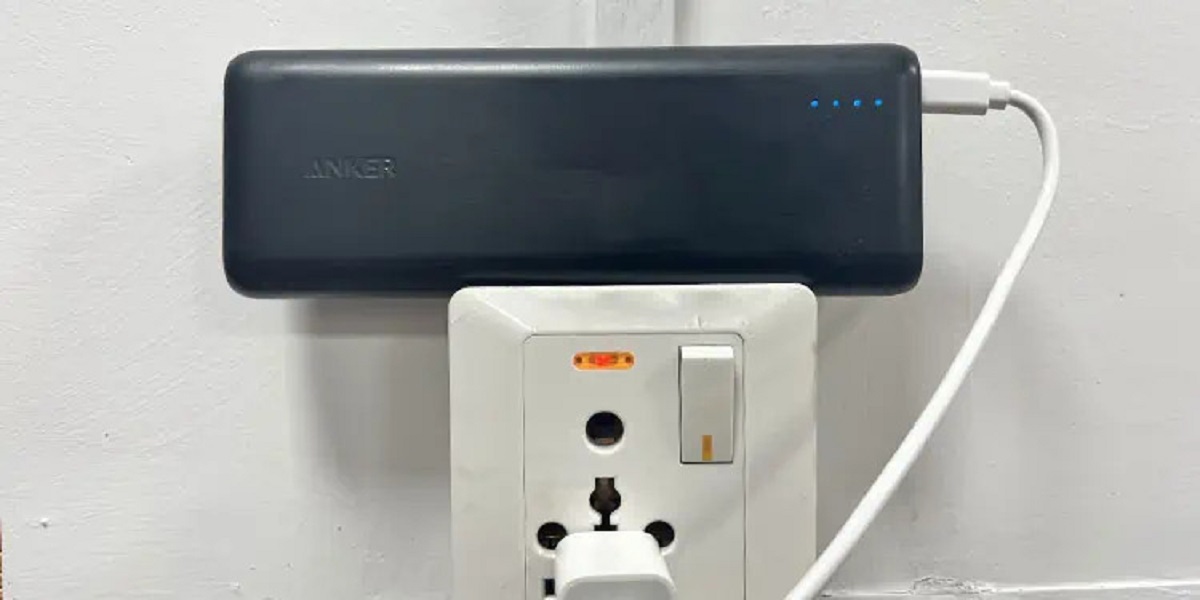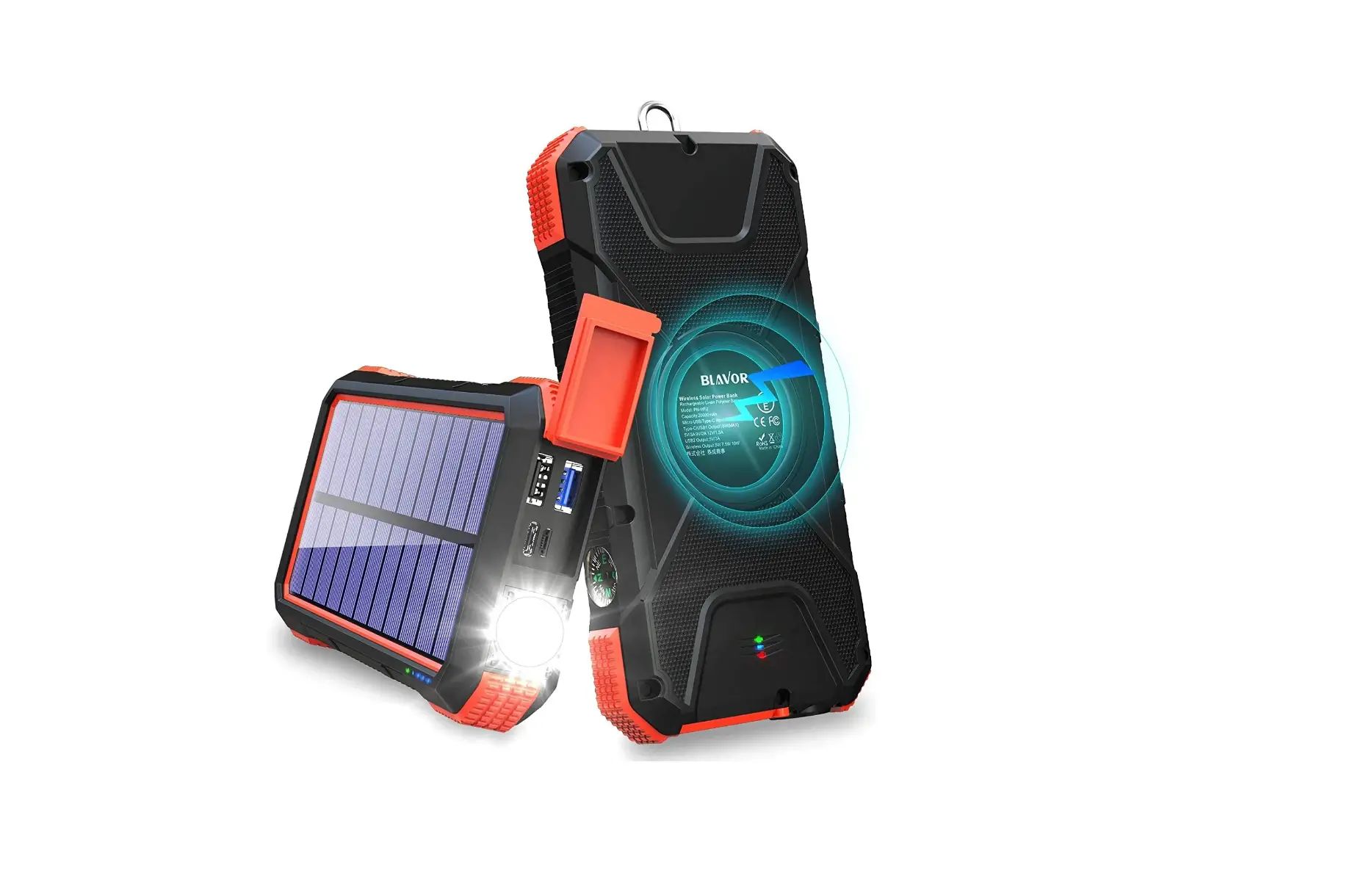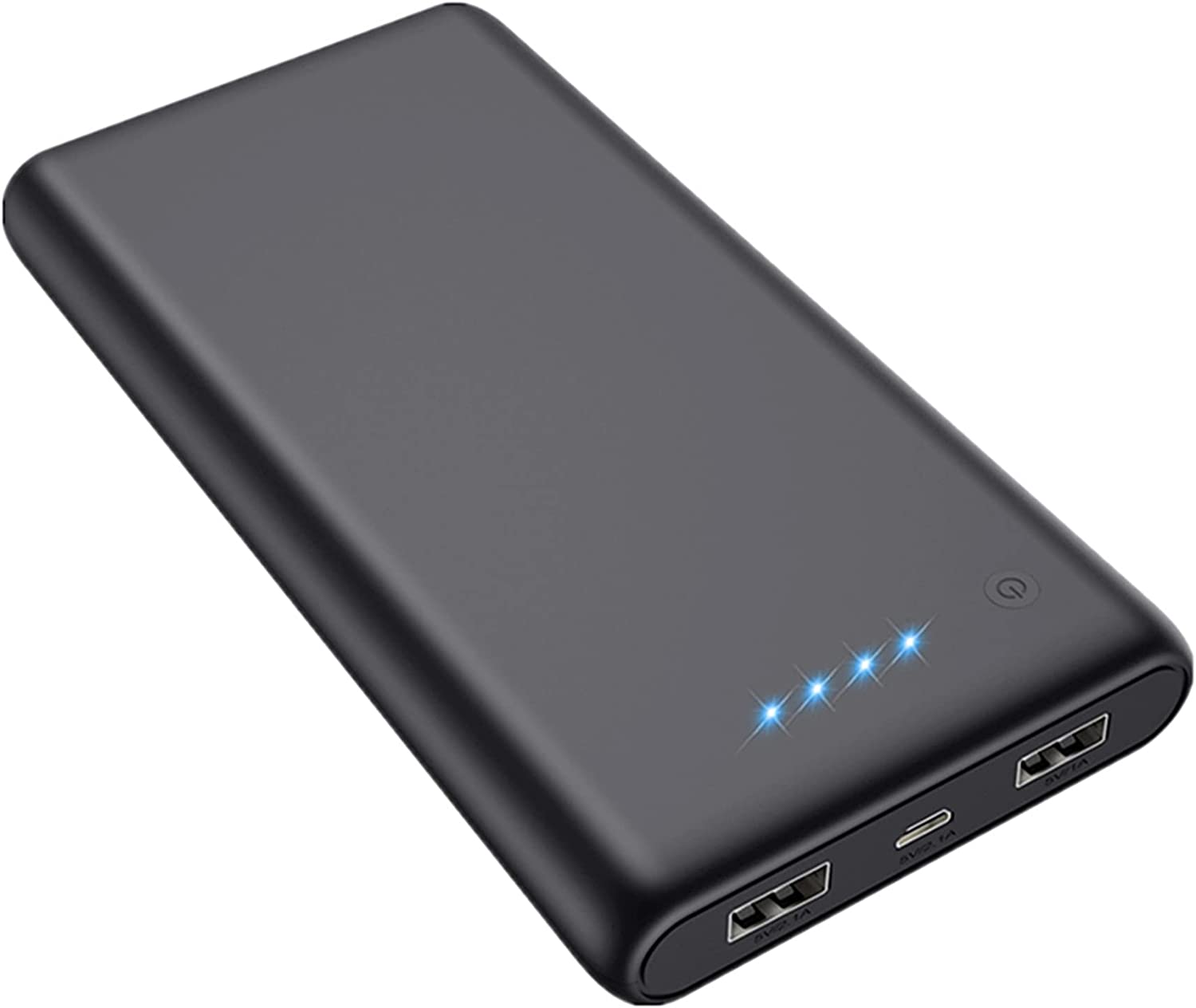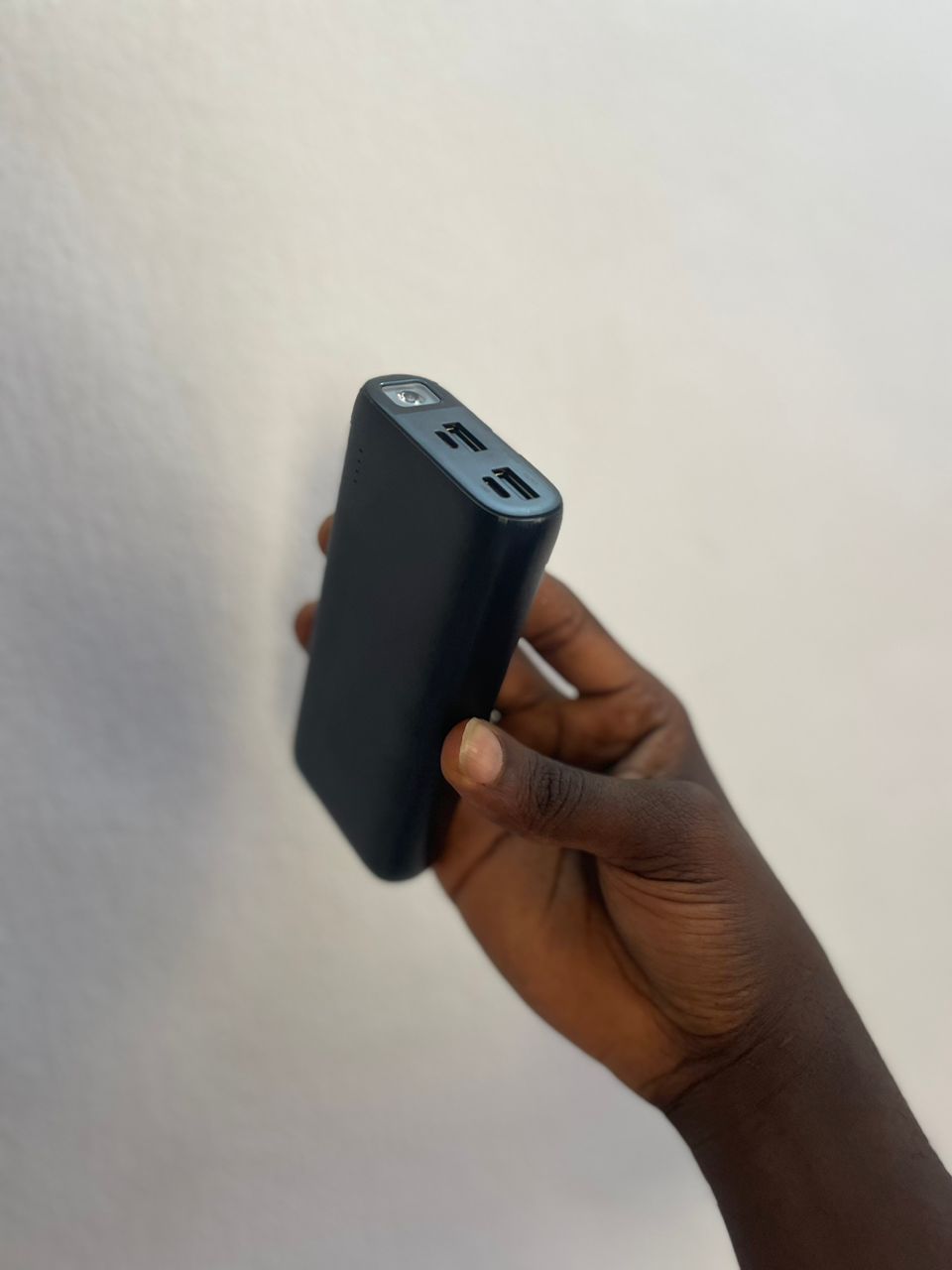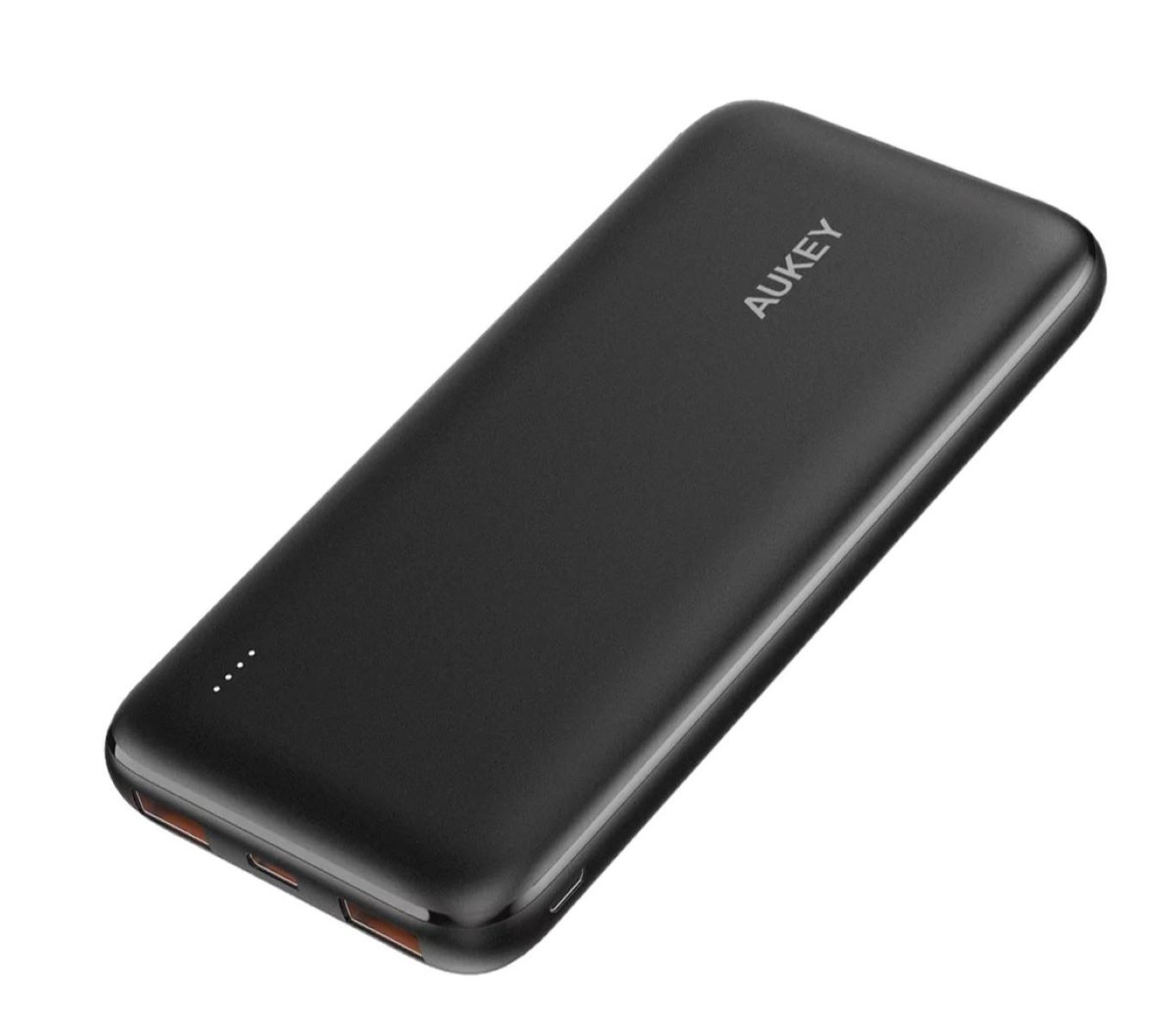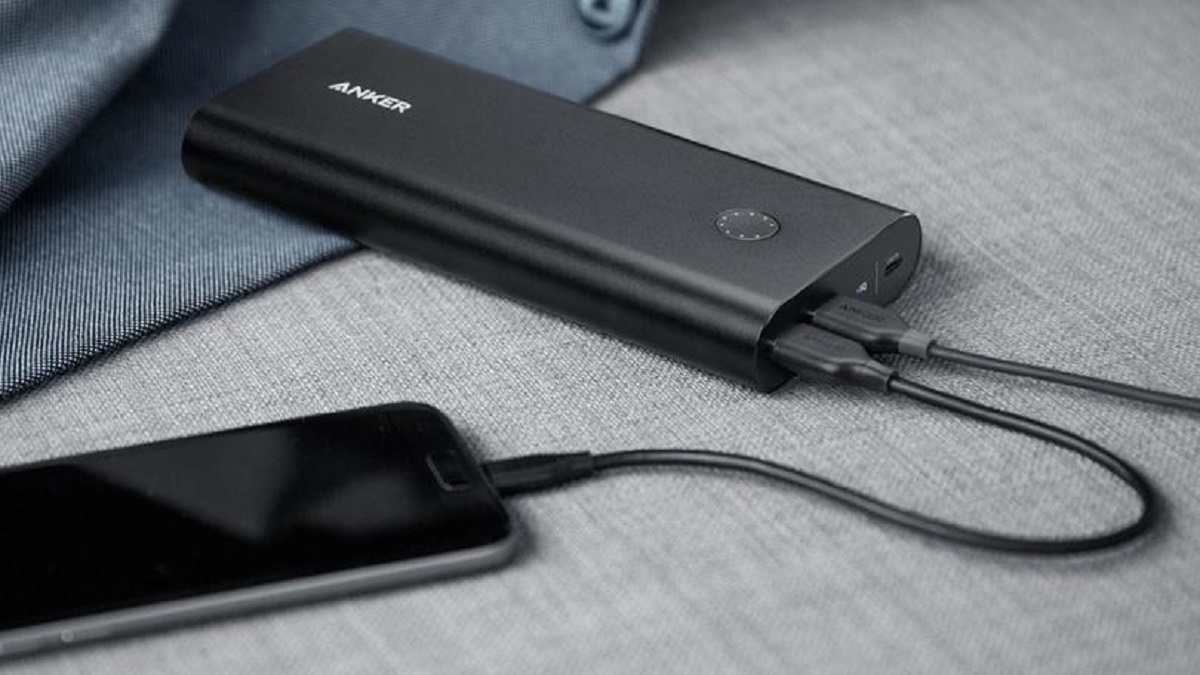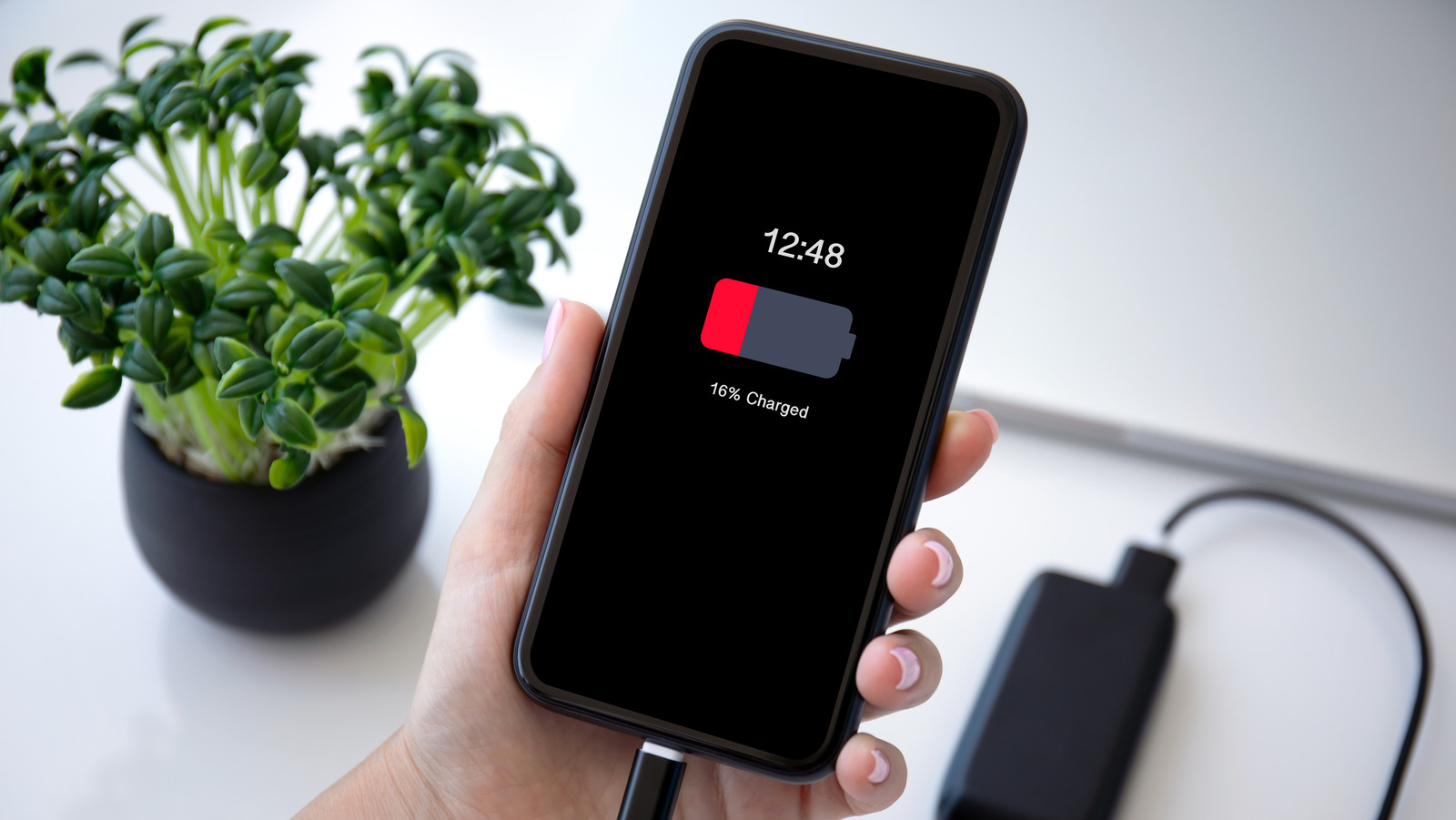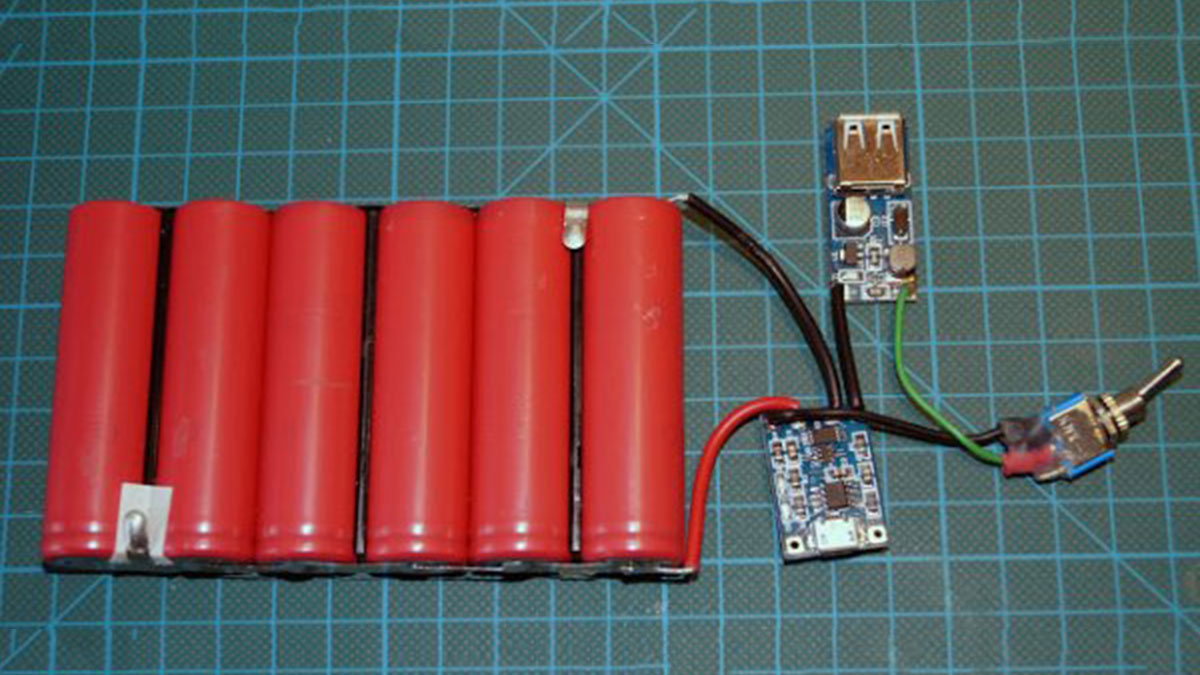Common Reasons Why Power Banks May Not Charge
Power banks have become essential accessories for our mobile devices, providing a convenient way to stay connected even when on the go. However, there may be times when your power bank does not charge your devices as expected. Understanding the common reasons behind this issue can help you troubleshoot and resolve the problem effectively. Here are some of the most common reasons why power banks may not charge:
- Insufficient Power Source: One possible reason could be that the power source from which you are charging the power bank does not provide enough power. Ensure that you are using a reliable power source, such as a wall outlet or a USB port with sufficient power output.
- Charging Cable Issues: Another common culprit is a faulty or damaged charging cable. Check the cable for any signs of wear and tear, and try using a different cable to see if that resolves the issue.
- Dirty or Damaged Charging Ports: Over time, the charging ports on your power bank can accumulate dirt, dust, or debris, leading to poor connectivity and charging issues. Carefully clean the charging ports using compressed air or a soft brush to remove any obstructions.
- Overheating or Thermal Shutdown: Power banks typically have built-in safety features to prevent overheating. If your power bank gets too hot, it may initiate a thermal shutdown, temporarily disabling the charging function. Allow the power bank to cool down before attempting to charge it again.
- Faulty Battery or Internal Circuitry: Sometimes, power banks experience internal malfunctions or defective battery cells that can prevent them from charging properly. If you suspect this to be the case, contacting the manufacturer or seeking professional repair may be necessary.
- Incompatible Device or Charging Method: Certain power banks may not be compatible with specific devices or charging methods. Ensure that your power bank is compatible with your device and that you are using the correct charging method as recommended by the manufacturer.
- Power Bank’s Age and Usage: Power banks, like any other electronic devices, can degrade over time with frequent use. If your power bank is old or has been heavily used, its performance and charging capabilities may diminish, requiring you to consider a replacement.
- Software or Firmware Issues: Occasionally, power banks may encounter software or firmware issues that prevent them from charging properly. Check for any available updates or contact the manufacturer if you suspect a software-related problem.
- Contacting the Manufacturer for Assistance: If you have tried all troubleshooting steps and your power bank still does not charge, it is recommended to reach out to the manufacturer’s customer support for further guidance and possible warranty claims.
- Tips to Extend Your Power Bank’s Lifespan: To avoid future charging issues, it is important to take proper care of your power bank. Avoid extreme temperatures, moisture, and excessive physical damage. Additionally, consider charging your power bank regularly and using it at least once every few months to maintain its health.
By understanding these common reasons why power banks may not charge, you can troubleshoot and resolve the issue efficiently. Remember to follow the manufacturer’s guidelines and seek professional assistance when needed, ensuring that your power bank remains a reliable source of portable power for your devices.
Insufficient Power Source
One of the common reasons why your power bank may not charge is due to an insufficient power source. Power banks usually require a stable and adequate power supply to charge effectively.
If you are using a wall outlet, make sure it is providing enough power output. Some power banks require higher power outputs, such as 2A or 2.4A, to charge efficiently. Check the specifications of your power bank and ensure that your wall outlet meets those requirements.
Similarly, if you are using a USB port to charge your power bank, verify that the USB port has sufficient power output. USB ports on laptops or other devices may have varying power outputs, and some may not provide enough power to charge your power bank at an optimal speed. Consider using a USB port with higher power output or try charging your power bank using a different USB port.
Moreover, using a low-quality or damaged charging cable can also lead to insufficient power supply. The cable may not be able to transmit the necessary power to charge the power bank effectively. Check the charging cable for any signs of wear and tear, such as frayed wires or loose connections. If you suspect that the charging cable is the issue, replace it with a high-quality, compatible cable that can provide the required power output.
In some cases, using an external power source like a power strip or a surge protector can also result in insufficient power supply to the power bank. These devices may introduce additional resistance or affect the power output, preventing the power bank from charging properly. Directly connecting your power bank to a reliable power source, such as a wall outlet or a computer’s USB port, can help resolve this issue.
It is important to note that charging your power bank with an insufficient power source may still work, but the charging process will be considerably slower. You may need to wait longer for your power bank to reach its full capacity. However, using the recommended power source will ensure efficient and timely charging of your power bank.
In summary, when facing a power bank that is not charging, one possible reason is an insufficient power source. Make sure that you are using a power source with the appropriate power output for your power bank. Check your wall outlet or USB port for adequate power supply, use a high-quality charging cable, and avoid using external power devices that may affect the power output. By addressing these issues, you can ensure that your power bank charges efficiently and effectively.
Charging Cable Issues
Another common reason why your power bank may not be charging is due to issues with the charging cable. The charging cable acts as the bridge between the power source and the power bank, carrying the electrical current necessary for charging.
One possible issue with the charging cable is physical damage. Over time, cables can become frayed, bent, or twisted, which can disrupt the flow of electricity. Inspect the charging cable for any visible signs of wear and tear, such as exposed wires or loose connectors. If you notice any damage, it is recommended to replace the cable with a new one to ensure a reliable connection.
Additionally, using a low-quality or incompatible charging cable can also lead to charging issues with your power bank. Some cables may not be able to handle the required power output or may not be compatible with your specific power bank model. Make sure you are using a charging cable that is designed for use with your power bank and that can support the necessary power output for efficient charging. Using the original cable provided by the manufacturer is often the safest choice.
It is also worth mentioning that using excessively long charging cables can introduce resistance and cause a drop in voltage, resulting in slower and inefficient charging. Opt for a shorter charging cable, ideally the one that came with your power bank or a cable of similar length, to minimize potential power loss during charging.
An additional consideration is the type of charging cable you are using. Some power banks support multiple input options, such as micro USB, USB-C, or Lightning connectors. Ensure that you are using the correct charging cable that is compatible with your power bank and the device you are charging. Using the wrong cable can lead to charging issues or even damage to your power bank or device.
In summary, if your power bank is not charging, it is important to inspect and address any potential issues with the charging cable. Look for physical damage, replace low-quality or incompatible cables, and use the appropriate type and length of cable for optimal charging. By ensuring a reliable and properly functioning charging cable, you can resolve charging issues and keep your power bank functioning as intended.
Dirty or Damaged Charging Ports
One of the common reasons why your power bank may not be charging is due to dirty or damaged charging ports. Over time, dust, dirt, and other debris can accumulate in the charging port, hindering proper connectivity and affecting the charging process.
Inspect the charging port on your power bank and check for any visible signs of dirt or debris. If you notice any buildup, gently clean the charging port using a soft brush or compressed air. Be careful not to apply excessive force or use sharp objects that can damage the port. Clearing away the dirt can help ensure a solid connection between the charging cable and the power bank, allowing for efficient charging.
Furthermore, physical damage to the charging port can also prevent your power bank from charging. Inspect the port for any signs of damage, such as bent pins or a loose connection. If you notice any issues, it may be necessary to seek professional repair or replace the power bank if the damage is severe. Avoid using the power bank if the charging port is damaged, as it can potentially cause further harm and affect the performance of the device.
It is important to note that prevention is key when it comes to maintaining a clean and undamaged charging port. Avoid exposing your power bank to dusty or dirty environments, and store it in a protective case when not in use. Additionally, be gentle when inserting and removing the charging cable, as excessive force can damage the port over time.
In summary, dirty or damaged charging ports can hinder the charging process of your power bank. Regularly inspect and clean the charging port to remove any dirt or debris that may affect the connection. If you notice any physical damage, consider seeking professional repair or replacing the power bank. By taking preventive measures and keeping the charging port clean and undamaged, you can ensure a reliable charging experience and prolong the lifespan of your power bank.
Overheating or Thermal Shutdown
Overheating is a common issue that can prevent your power bank from charging properly. Power banks are equipped with built-in safety mechanisms to protect against overheating, and when the internal temperature rises above a certain threshold, the power bank may initiate a thermal shutdown to prevent damage.
Several factors can contribute to the overheating of your power bank. Exposing the power bank to direct sunlight, placing it on surfaces that generate heat, or using it in high-temperature environments can all lead to overheating. Additionally, using the power bank while it is charging or charging multiple devices simultaneously can increase the heat generated.
If your power bank feels unusually hot to the touch or if you notice a significant decrease in charging efficiency, it may be overheating. In such cases, it is important to disconnect the power bank from the charging source immediately and allow it to cool down in a well-ventilated area. Avoid using the power bank until it has cooled down to a safe operating temperature.
To prevent overheating in the future, it is essential to use your power bank within its recommended temperature range. Refer to the manufacturer’s guidelines to determine the appropriate operating temperature range and avoid using the power bank in extreme conditions.
In addition, consider using a power bank with built-in overheating protection features. Some power banks are designed to automatically adjust the charging speed or shut down when the temperature reaches a critical point. Investing in a power bank with these safety features can provide added peace of mind.
It is important to note that if your power bank frequently overheats or experiences thermal shutdowns, it may indicate a larger underlying issue. In such cases, it is advisable to contact the manufacturer or seek professional assistance to diagnose and resolve the problem.
In summary, overheating can cause your power bank to enter thermal shutdown mode, preventing it from charging. Avoid exposing your power bank to high temperatures and use it within the recommended temperature range. If your power bank overheats, disconnect it from the charging source and allow it to cool down. Consider using a power bank with built-in overheating protection. If overheating issues persist, contact the manufacturer for assistance.
Faulty Battery or Internal Circuitry
A faulty battery or internal circuitry can be another reason why your power bank is not charging. Power banks, like any electronic device, can experience malfunctions or defects over time.
If you have tried different charging cables, power sources, and ensured that the charging ports are clean and undamaged, but your power bank still does not charge, there might be an issue with the battery or internal circuitry.
Faulty battery cells can prevent the power bank from charging properly. These cells might not hold a charge or may lose power quickly, rendering the power bank ineffective. In such cases, the best solution is to contact the manufacturer or seek professional repair services. They will have the expertise to diagnose and fix the issue.
Internal circuitry problems can also hinder the charging capability of your power bank. Short circuits, damaged components, or loose connections within the power bank can disrupt the charging process. Identifying and repairing these issues may require specialized knowledge and skills, so it is advisable to contact the manufacturer or a qualified professional for assistance.
If your power bank is still under warranty, reach out to the manufacturer and inquire about the warranty claim process. They may be able to provide a replacement or repair the power bank free of charge. Be prepared to provide them with the necessary details, such as the model number, purchase date, and any relevant proof of purchase.
It is important to note that attempting to repair or open the power bank on your own may void the warranty or cause further damage. Therefore, it is always recommended to seek professional assistance.
In summary, if your power bank is not charging despite trying various troubleshooting methods, it might be due to a faulty battery or internal circuitry. Contact the manufacturer or seek professional repair services to diagnose and resolve the issue. Avoid attempting self-repairs to prevent voiding the warranty or causing further damage to your power bank.
Incompatible Device or Charging Method
An incompatible device or charging method can be a reason why your power bank is not charging. Power banks are designed to work with a wide range of devices, but there may be instances where compatibility issues arise.
First, ensure that the device you are trying to charge is compatible with the power bank. Different devices may have varying power requirements, and if your power bank does not meet those requirements, it may not charge the device properly or at all. Check the power bank’s specifications and verify that it supports the device you are attempting to charge.
Furthermore, the charging method you are using can also affect the charging capability of your power bank. Many power banks offer multiple charging methods, such as USB-A, USB-C, or wireless charging. The device you are charging must be compatible with the charging method supported by the power bank. For example, if you have a power bank with USB-C output, ensure that your device supports USB-C charging. Using an incompatible charging method may result in the power bank not being able to charge the device.
It is worth noting that some devices require a higher power output than what a power bank can provide. For instance, high-performance laptops or tablets may require more power than a standard power bank can deliver. In such cases, the power bank may not be able to charge the device efficiently or maintain the charge level during usage. Consider checking the power requirements of your device and compare them with the power bank’s capabilities to ensure compatibility.
Using a third-party charging cable that is not certified or compatible with your device can also lead to compatibility issues. These cables may not be able to transmit the necessary power or communicate properly with the power bank, resulting in charging problems. Stick to using cables that are recommended by the device manufacturer or provided by the power bank manufacturer to ensure compatibility.
If you are unsure about the compatibility between your power bank and device, refer to the user manuals or documentation provided by the manufacturers. They often provide information about compatible devices and charging methods.
In summary, compatibility issues can prevent your power bank from charging your device. Ensure that your device is compatible with the power bank and that you are using the correct charging method. Avoid using third-party cables unless they are certified and recommended by the manufacturers. By ensuring compatibility, you can maximize the charging functionality of your power bank and keep your devices powered up on the go.
Power Bank’s Age and Usage
The age and usage of a power bank can play a significant role in its charging capability. Over time, power banks can experience wear and tear, affecting their overall performance and charging efficiency.
As power banks age, their batteries may start to degrade. This degradation can result in reduced battery capacity and a decrease in the power bank’s ability to hold and deliver a charge. If you have had your power bank for a long time and notice that it is not charging as effectively as before, it could be a sign of battery deterioration.
Additionally, frequent usage can also impact the lifespan and charging capability of a power bank. Power banks are designed for regular use, but excessive and heavy usage can put a strain on the internal components, including the battery and circuitry. Over time, this can lead to diminished charging performance.
It is worth noting that different power banks have varying lifespans and durability. Higher-quality power banks with better components tend to have a longer lifespan and provide more consistent charging performance. Cheaper or lower-quality power banks may experience degraded performance sooner, especially with frequent usage.
To extend the lifespan of your power bank and maintain its charging capability, it is crucial to use it in accordance with the manufacturer’s recommendations. Avoid exposing the power bank to extreme temperatures, both cold and hot, as it can negatively impact the battery’s performance. Additionally, avoid overcharging or fully discharging the power bank, as this can contribute to accelerated battery degradation.
Cleaning and maintaining your power bank regularly can also help prolong its lifespan. Keep the charging ports free from dust and debris, and store the power bank in a cool and dry place when not in use. Proper storage can help prevent physical damage to the power bank and extend its longevity.
If you notice a significant decrease in charging efficiency or overall performance and have had the power bank for an extended period, it may be time to consider replacing it. Newer models may offer improved battery technology, faster charging speeds, and enhanced durability, ensuring a more reliable and efficient charging experience.
In summary, the age and usage of a power bank can impact its charging capability. Over time, power banks may experience battery degradation and reduced performance. Utilize your power bank in accordance with the manufacturer’s recommendations, clean it regularly, and store it properly to extend its lifespan. If you notice significant declines in charging efficiency, consider replacing the power bank with a newer model to ensure optimal performance.
Software or Firmware Issues
Software or firmware issues can be a potential reason why your power bank is not charging properly. Just like any electronic device, power banks rely on software or firmware to control various functions, including the charging process.
If the software or firmware running on your power bank is outdated or faulty, it can lead to charging-related issues. Software glitches or bugs can interfere with the charging process, causing the power bank to not charge or charge intermittently.
To address potential software or firmware issues, first, check for available updates for your power bank’s software or firmware. Many power banks can be updated using dedicated applications or software provided by the manufacturer. These updates often include bug fixes and performance improvements that can help resolve charging-related problems.
Consult the user manual or visit the manufacturer’s website to find instructions on how to update the software or firmware of your power bank. Follow the provided guidelines carefully to ensure a successful update and proper functioning of the power bank.
If you have already updated the software or firmware and the charging issue persists, consider performing a reset of the power bank. This process can help reset any settings or configurations that may be causing the charging problem. The reset procedure may vary depending on the model of your power bank, so refer to the user manual or contact the manufacturer for specific instructions.
If the software or firmware issues persist even after updating and resetting, it is recommended to contact the manufacturer’s customer support for further assistance. They may be able to provide specialized troubleshooting steps or offer a repair or replacement if the power bank is still under warranty.
It is important to note that attempting to modify or tamper with the software or firmware of the power bank on your own can void the warranty and may cause further damage. Therefore, it is advisable to seek professional help or guidance from the manufacturer in such cases.
In summary, software or firmware issues can interfere with the charging process of your power bank. Start by checking for available updates and perform a reset if necessary. Contact the manufacturer’s customer support if the issues persist for specialized assistance. Avoid attempting software or firmware modifications on your own to prevent warranty voidance and potential damage to the power bank.
Contacting the Manufacturer for Assistance
If you have tried various troubleshooting methods and your power bank is still not charging, contacting the manufacturer for assistance is a logical next step. The manufacturer’s customer support team can provide specialized guidance and solutions tailored to your specific power bank model.
When reaching out to the manufacturer, be prepared to provide them with the necessary information, such as the model number, purchase date, and any relevant proof of purchase. This information will help them assess the warranty status of your power bank and determine the appropriate course of action.
Explain in detail the specific issues you are facing with your power bank, including any troubleshooting steps you have already attempted. The more information you can provide, the better equipped the manufacturer’s customer support team will be to assist you effectively.
Depending on the warranty coverage and the severity of the issue, the manufacturer may offer a repair or replacement for your power bank. They may also provide additional troubleshooting steps or recommend authorized service centers that can address the problem.
Keep in mind that the warranty coverage for power banks can vary, so familiarize yourself with the warranty terms and duration specified by the manufacturer. If your power bank is still under warranty, it is advisable to contact the manufacturer as soon as possible to take advantage of any applicable repair or replacement services.
If your power bank is no longer covered by warranty, the manufacturer may still be able to offer guidance or recommend authorized repair centers where you can seek assistance for a fee. They can provide you with valuable insights and ensure that the repairs are carried out by trained professionals using genuine replacement parts.
In some cases, you may be required to send the power bank to the manufacturer for further inspection and repair. Follow the instructions provided by the manufacturer for packaging and shipping the power bank safely to prevent any additional damages during transit.
In summary, if your power bank is not charging and you have exhausted all available troubleshooting methods, contacting the manufacturer for assistance is recommended. They can provide specialized guidance based on your power bank model and warranty coverage. Be prepared to provide all necessary information and follow the manufacturer’s instructions for repair or replacement processes. Contacting the manufacturer ensures that your power bank receives the appropriate assistance and increases the likelihood of resolving the charging issue effectively.
Tips to Extend Your Power Bank’s Lifespan
To ensure that your power bank continues to function optimally and provide reliable charging for your devices, it is important to take proper care of it. Here are some tips to help extend your power bank’s lifespan:
- Avoid Extreme Temperatures: Exposure to extreme temperatures can negatively impact the performance and lifespan of your power bank. Avoid using or storing the power bank in excessively hot or cold environments as it can affect battery performance. Ideally, keep your power bank in a cool, dry place.
- Store at Moderate Charge Level: It is recommended to store your power bank at a moderate charge level, around 40-60%. This helps prevent over-discharge or overcharging, which can reduce the lifespan of the battery.
- Regularly Charge and Discharge: Although lithium-ion batteries, commonly used in power banks, do not suffer from the “memory effect,” it is still beneficial to regularly charge and discharge your power bank. By using it regularly, you can ensure that the battery stays active and maintain its optimal performance.
- Avoid Deep Discharge: While it is essential to discharge the power bank occasionally, try to avoid deep discharges. Deeply discharging the battery frequently can affect its capacity over time. Instead, aim to charge your power bank before it completely drains.
- Use the Recommended Charger and Cable: To avoid potential compatibility issues and ensure efficient charging, use the charger and cable recommended by the power bank manufacturer. Using high-quality, compatible accessories helps maintain a stable power supply and reduces the risk of damage to the power bank or devices.
- Handle with Care: While power banks are portable and designed to withstand normal usage, it is still important to handle them with care. Avoid dropping or subjecting your power bank to excessive physical pressure, as it can damage the internal components and affect its functionality.
- Keep the Charging Ports Clean: Regularly clean the charging ports of your power bank to remove dust, dirt, or debris. Use a soft, lint-free cloth or a gentle brush to clean the ports gently. This helps maintain a solid connection between the charging cable and the power bank, ensuring proper charging functionality.
- Avoid Overcharging: While most modern power banks have built-in safety features to prevent overcharging, it is still a good practice to avoid leaving your power bank connected to a power source for an extended period. Disconnect the power bank once it is fully charged to prevent unnecessary strain on the battery.
- Protect from Moisture: Moisture can damage the internal components of your power bank and compromise its functionality. Keep your power bank away from water, humidity, and other sources of moisture to ensure its longevity.
- Follow Manufacturer’s Guidelines: Finally, always refer to the manufacturer’s guidelines and recommendations for usage, charging, and maintenance of your power bank. Each power bank may have specific instructions unique to its model, and following them can help you maximize its lifespan and performance.
By following these tips, you can extend the lifespan of your power bank and ensure that it continues to provide reliable charging for your devices. Proper care and maintenance will not only enhance the functionality of your power bank but also optimize its performance over the long term.







